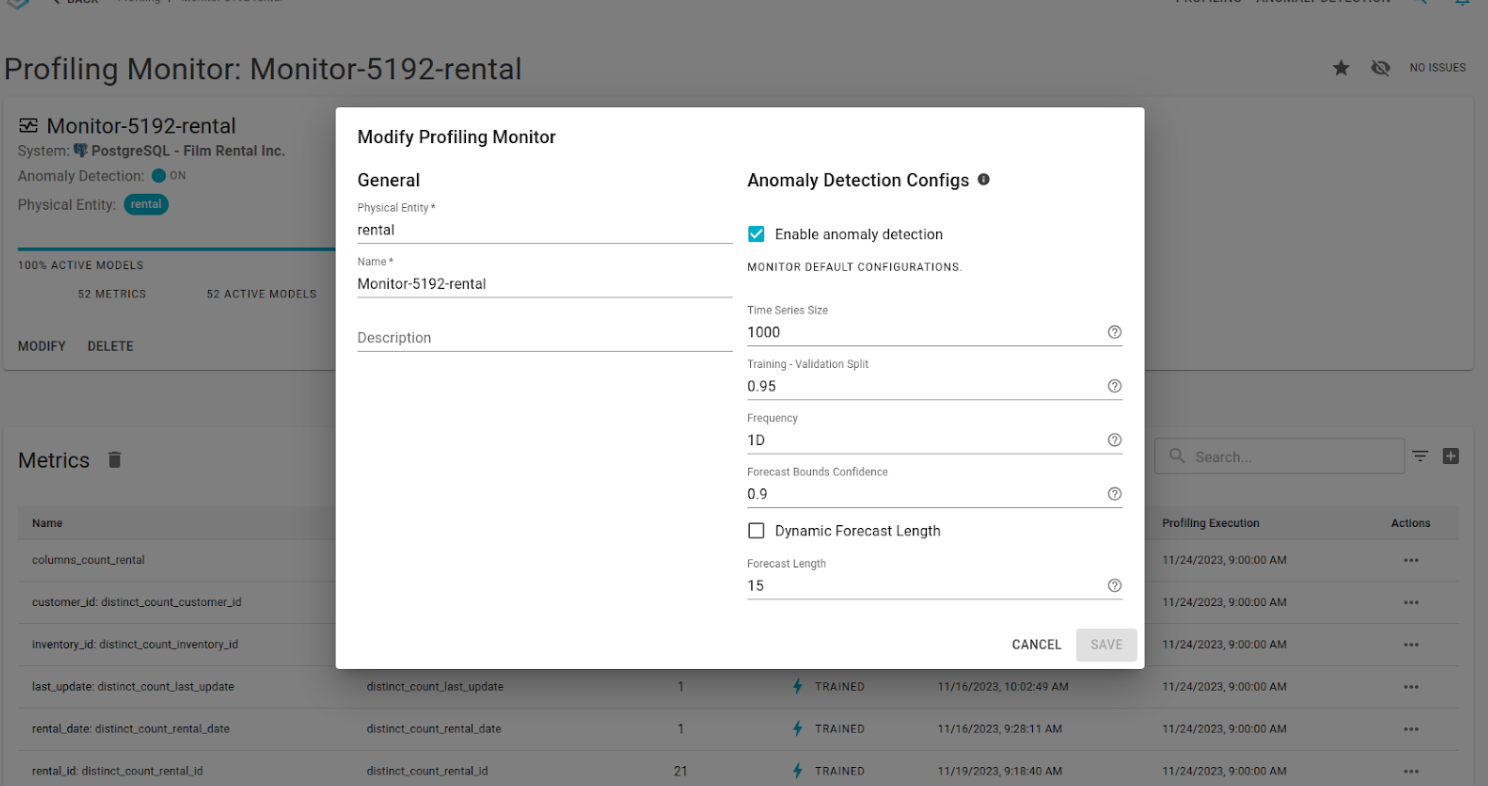How to Configure Anomaly Detection
Configuring Anomaly Detection
In Blindata, the anomaly detection feature offers a robust configuration process through the profiling monitor. This configuration can be globally applied to all metrics within a profiling monitor, establishing a default setup for all the metrics in that monitor. Alternatively, users have the flexibility to specify unique configurations for individual metrics.

Configuration Properties
| Option | Description |
|---|---|
| Time Series Size | Set the length of the time series data used for analysis. |
| Training-Validation Split | Determine the percentage of data allocated for training and validation purposes. |
| Metric Feed Frequency | Define the frequency at which metric data is fed into the system for analysis. |
| Forecast Bounds Confidence | Establish the confidence level for forecast bounds, influencing anomaly detection sensitivity. |
| Dynamic Forecast Length | Enable this flag to allow the model to autonomously determine the most suitable forecast length based on the entropy of the time series. |
| Fixed Forecast Length | Alternatively, users can set a specific, user-defined value for the forecast length. |
| Minimum Training Data | Set the number of records required before the machine learning model initiates the training process. |
By configuring these parameters within the profiling monitor, users can tailor the anomaly detection system to their specific needs. Whether applying a universal configuration for all metrics or fine-tuning settings for individual metrics, Blindata provides a flexible and adaptable approach to anomaly detection.